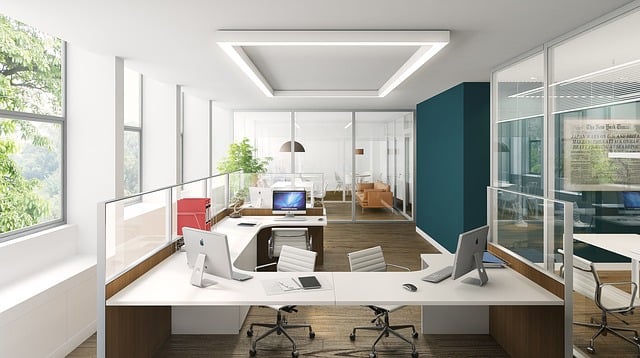Modern employee preferences for suburban workspaces drive a shift in commercial real estate, as remote and hybrid work models gain popularity. Younger generations' pursuit of better work-life balance and shorter commutes fuels this trend. Suburban offices offer quieter environments, affordable lease rates, and community-oriented atmospheres, attracting businesses seeking to differentiate themselves. Revitalizing underutilized spaces into modern co-working areas with green design and improving public amenities enhances suburban appeal, fostering economic growth and diversity.
Suburban offices are experiencing a long-awaited resurgence, driven by shifting work trends and a growing allure for businesses and employees alike. As remote work becomes increasingly normalized, many are rediscovering the benefits of suburban locations—from ample space and affordable rents to a higher quality of life. This article explores the renewed interest in these areas, delving into shifting work patterns, modern perceptions, and real estate strategies to revitalize suburban business hubs through innovative developments and partnerships.
Shifting Work Trends Fuel Suburban Office Demands

The evolving nature of work has led to a significant shift in employee preferences, marking a distinct change from the traditional urban office setting. With remote work becoming increasingly popular and hybrid models gaining traction, many professionals are seeking alternative workspaces that offer a more tranquil and connected environment. This trend is driving substantial interest in suburban offices, which have long been overshadowed by their bustling city center counterparts.
Real estate developers and investors alike are recognizing this shift, prompting a surge in the revitalization of suburban office spaces. These areas provide a sense of community and tranquility, appealing to those who desire a more balanced lifestyle while still maintaining access to urban amenities. As work trends continue to adapt, suburban offices are poised to become the next desirable destination for businesses and employees alike, reshaping the commercial real estate landscape in unexpected ways.
The Appeal of Suburban Offices: A Modern Perspective

Suburban offices are making a comeback, appealing to modern businesses for several compelling reasons. In contrast to the hustle and bustle of urban centers, suburban locations offer a quieter, more serene environment, enhancing productivity and employee satisfaction. This shift is partly driven by the changing preferences of younger generations who value a better work-life balance and shorter commutes, making suburban offices an attractive alternative to bustling city centers.
Real estate in these areas often provides ample space for growth, with affordable lease rates compared to urban hotspots. Additionally, suburban communities offer a strong sense of belonging and a more intimate business atmosphere, fostering collaboration and creativity among teams. As businesses seek ways to differentiate themselves and cater to their workforce’s needs, the allure of suburban offices is becoming increasingly evident, reshaping the commercial real estate landscape in unexpected yet promising ways.
Real Estate Strategies for Revitalizing Suburban Business Hubs

Suburban areas are seeing a surge in interest from businesses looking to establish or expand their operations, presenting unique opportunities for real estate strategies focused on revitalizing local business hubs. One key approach involves redeveloping underutilized commercial spaces into modern, flexible office environments that cater to the needs of startups and small enterprises. This can include converting older buildings into co-working spaces, offering amenities such as meeting rooms and kitchen areas, and implementing green design elements to appeal to environmentally conscious tenants.
Real estate developers and investors should also consider partnerships with local governments and community organizations to create vibrant public spaces and infrastructure that enhance the overall desirability of suburban business districts. This might include revitalizing parks, improving transportation networks, and promoting walkability and bike-friendliness. By integrating these strategies, suburban areas can position themselves as attractive alternatives to urban centers, attracting a diverse range of businesses and fostering economic growth.






